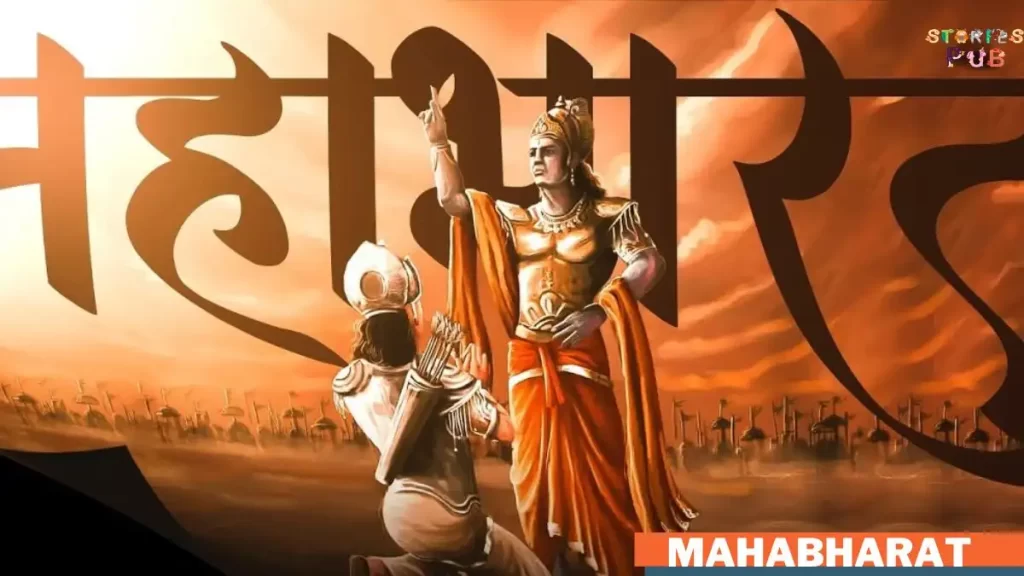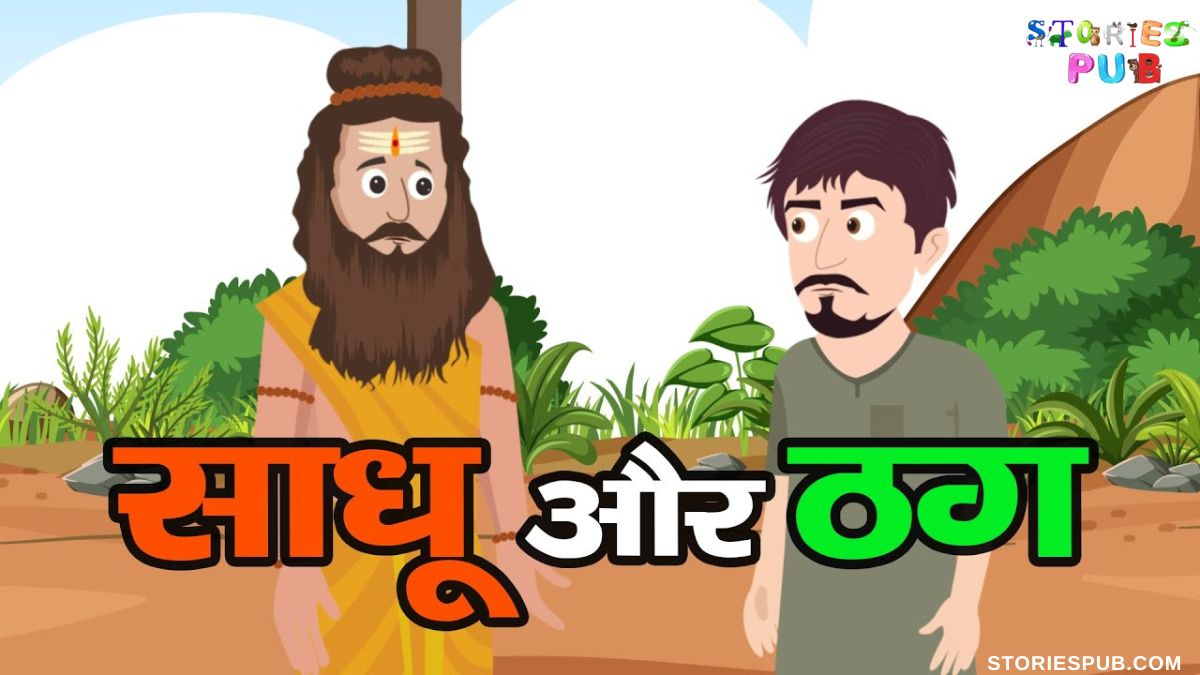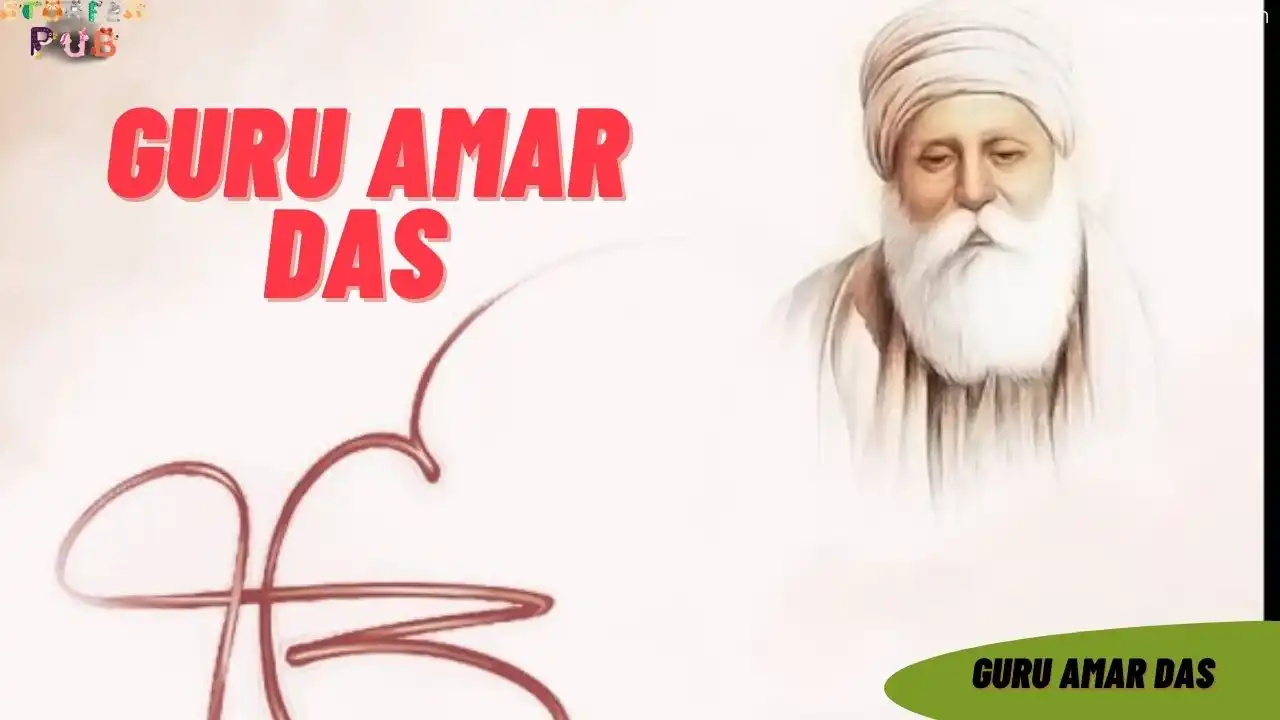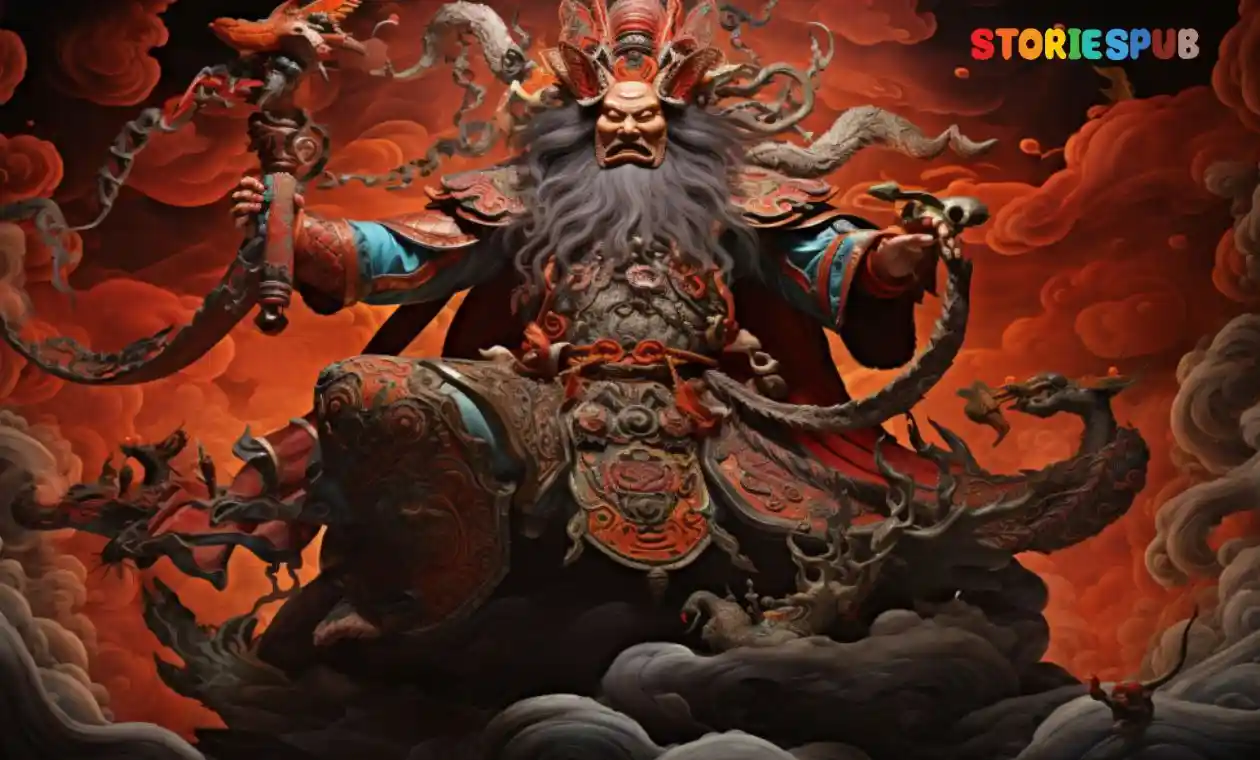Summarize this Article with:
The Mahabharat – An In-Depth Exploration of the Epic and Its Characters

AbbyViral
The Mahabharata is an ancient Indian epic, often regarded as one of the longest and most complex literary works in the world. Attributed to the sage Vyasa, the epic consists of over 100,000 verses, divided into 18 parvas or books. It is believed to have been composed between 400 BCE and 400 CE, with the final form taking shape by the 4th century CE.
The epic tells the story of the Kuru dynasty, focusing primarily on the conflict between two groups of cousins: the Pandavas and the Kauravas. The narrative traces their lives from their birth to the climactic 18-day battle of Kurukshetra, where both sides face off in a struggle for the throne of Hastinapur, their ancestral kingdom.
The Mahabharat is not just a tale of war and rivalry; it is also a rich source of philosophical and ethical teachings. It encompasses numerous sub-stories and discusses various topics, such as dharma (duty), karma (action and its consequences), and the nature of life and human relationships.
One of the most famous parts of the Mahabharat is the Bhagavad Gita, a conversation between Prince Arjuna, one of the Pandava brothers, and Lord Krishna, his charioteer and guide. This dialogue explores the nature of duty, the importance of righteous action, and the concept of detachment from the fruits of one’s actions. The Bhagavad Gita is considered a sacred text in Hinduism and has inspired countless interpretations, commentaries, and philosophical discussions throughout history.
The Mahabharata is not merely a tale of kings and warriors; it also delves into the lives of ordinary people, exploring their struggles, desires, and dilemmas. Throughout the epic, characters are faced with moral dilemmas and difficult choices, providing insights into human nature and the complexities of life.
The story of the Mahabharata has had a profound influence on Indian culture, religion, and philosophy. It has inspired numerous adaptations, including plays, novels, movies, and television series, both in India and around the world. The epic continues to be a source of wisdom and reflection for millions of people, offering guidance on living a life of virtue, wisdom, and compassion.
Importance of the epic in Indian culture and Hinduism
The Mahabharat holds immense significance in Indian culture and Hinduism, as it serves as a repository of wisdom, values, and teachings that continue to shape the beliefs and practices of millions of people. The impact of the epic on various aspects of Indian culture and Hinduism is multifaceted, as explained below:
Ethical and Philosophical Teachings: The Mahabharat delves deeply into the concepts of dharma (duty), karma (action and its consequences), and the cycle of birth and death (samsara). These ideas form the cornerstone of Hindu philosophy and provide a moral compass for adherents of the faith. The Bhagavad Gita, a part of the Mahabharat, is considered a sacred text in Hinduism and offers guidance on living a virtuous life, embracing one’s duty, and attaining spiritual enlightenment.
Cultural Influence: The Mahabharat has had a profound impact on Indian culture, influencing various art forms such as literature, dance, music, painting, and sculpture. The epic has inspired countless adaptations, retellings, and creative interpretations, which have enriched and diversified Indian artistic and cultural heritage.
Rituals and Traditions: Several rituals and traditions in Hinduism draw inspiration from the events and characters of the Mahabharat. For example, the festival of Dussehra which celebrates the victory of good over evil, has its roots in the epic battle between the Pandavas and Kauravas. Similarly, the festival of Janmashtami, which marks the birth of Lord Krishna, is closely associated with the Mahabharat, as Krishna plays a pivotal role in the narrative.
Social and Moral Values: The Mahabharat reflects the social and moral values of ancient Indian society, providing insights into the virtues, duties, and responsibilities that were considered essential for an individual’s personal growth and societal harmony. Themes such as loyalty, honor, righteousness, and compassion are prevalent throughout the epic, shaping the value system that underpins Hinduism and Indian culture.
Spiritual Significance: The Mahabharat serves as a spiritual guide, offering wisdom on the nature of the self, the divine, and the ultimate goal of human life – liberation from the cycle of birth and death (moksha). Many of the characters in the epic, such as Yudhishthira, Arjuna, and Bhishma, undertake spiritual journeys, offering valuable lessons on self-discovery, devotion, and detachment.
Mythology and Cosmology: The Mahabharat is replete with tales of gods, goddesses, and supernatural beings, enriching Hindu mythology and cosmology. The epic describes the intricate relationships between the divine and human realms, offering insights into the workings of the universe and the role of divine intervention in human affairs. The Mahabharat also narrates the creation of the cosmos, the lineage of kings and sages, and the intricate connections between various mythological figures, which are integral to Hindu cosmogony and the understanding of the divine order.
Sacred Geography: The Mahabharat references numerous sacred sites, pilgrimages, and holy places across India. Many of these sites continue to hold great spiritual significance for Hindus and are visited by millions of devotees each year. The epic also provides detailed accounts of the sacred rivers, mountains, and forests that are revered in Hinduism and form an essential aspect of India’s sacred geography.
Mahabharat is deeply intertwined with Indian culture and Hinduism, shaping the ethical, philosophical, and spiritual dimensions of the tradition. Its influence permeates various art forms, rituals, social values, and mythology, making it an enduring and integral aspect of India’s cultural and religious heritage.
The Mahabharat’s Story and Characters
The Mahabharat, a magnum opus of ancient Indian literature, weaves a spellbinding narrative filled with intricate plotlines and a vast array of characters. The story encompasses themes of love, hatred, duty, and morality, all set against the backdrop of the Kuru dynasty’s internal strife. The epic’s character roster includes divine beings, mighty warriors, and virtuous rulers, each contributing to the multifaceted tapestry of the Mahabharat.
At the heart of the Mahabharat lies the tale of the Kuru family, specifically the rivalry between the Pandavas and the Kauravas, who are cousins vying for the throne of Hastinapur. The Pandavas are the five sons of King Pandu and his two wives, Kunti and Madri. They are Yudhishthira, Bhima, Arjuna, Nakula, and Sahadeva. On the other hand, the Kauravas are the 100 sons of King Dhritarashtra, Pandu’s blind brother, and his wife, Gandhari.
The seeds of animosity between the two factions are sown early in the narrative, as the cousins grow up and learn the arts of warfare and statecraft. Over time, the Kauravas, led by their eldest brother, Duryodhana, become increasingly jealous and hostile toward the Pandavas, who are known for their righteousness, bravery, and adherence to dharma.
A turning point in the story is the infamous game of dice, orchestrated by Duryodhana and his uncle Shakuni, which culminates in the Pandavas losing their kingdom and going into exile. During the game, the Pandavas’ wife, Draupadi, is humiliated by the Kauravas, setting the stage for an eventual battle to reclaim their lost honor and kingdom.
As the Pandavas complete their exile and attempt to regain their kingdom through negotiations, tensions escalate between the two factions. This ultimately leads to the colossal 18-day battle of Kurukshetra, where countless warriors, kings, and heroes from all corners of the Indian subcontinent participate. The devastating war results in the decimation of the Kauravas and the eventual triumph of the Pandavas.
Throughout the epic, a myriad of other characters enrich the narrative, adding depth and complexity to the story. One such character is Lord Krishna, who plays a crucial role as a mentor, strategist, and divine guide for the Pandavas. His teachings, as expounded in the Bhagavad Gita, impart profound wisdom on life, duty, and spirituality.
Another key character is Bhishma, the grand-uncle of both the Pandavas and Kauravas, who is renowned for his unwavering commitment to truth and duty. Other notable figures include the powerful matriarchs Kunti and Gandhari, whose decisions and actions significantly impact the course of events in the epic. Karna, the valiant warrior and secret half-brother of the Pandavas, is yet another fascinating character whose loyalty and sense of duty are central to his narrative arc.
In addition to the primary characters, the Mahabharat teems with numerous other figures who contribute to the richness of the story. Each character, whether hero or villain, is endowed with their unique set of virtues and flaws, making them relatable and human. These complex and multi-dimensional personalities capture the reader’s imagination, bringing to life the intricate web of relationships, loyalties, and conflicts that define the epic.
The Mahabharat’s story and characters offer a captivating exploration of human nature, moral dilemmas, and the eternal quest for truth and justice. The epic masterfully portrays the struggles and triumphs of its protagonists, revealing valuable insights into the human condition and the enduring power of virtue and wisdom.
In summary, the Mahabharat presents an enthralling narrative centered on the Kuru dynasty, with a diverse array of characters that breathe life into the story. The epic delves deep into the complexity of human relationships, moral choices, and the pursuit of righteousness, making it a timeless masterpiece that continues to captivate and inspire generations of readers.
The Kuru family tree and key Mahabharat characters
The Kuru family tree in the Mahabharat is a complex web of relationships that forms the basis of the epic’s narrative. As the story unfolds, numerous key characters emerge from this lineage, each playing a vital role in the events that transpire. This article offers an overview of the Kuru family tree and highlights some of the most significant characters in the Mahabharat.
The Kuru dynasty can be traced back to King Shantanu, who married the enigmatic Ganga, the river goddess. They had a son named Bhishma, who later took a vow of celibacy and renounced the throne to ensure the prosperity of his father’s lineage. Shantanu later married Satyavati, with whom he had two sons, Chitrangada and Vichitravirya. After Shantanu’s death, Bhishma raised his half-brothers and eventually arranged their marriages.
Vichitravirya married two princesses, Ambika and Ambalika, but died without producing an heir. To secure the Kuru lineage, Satyavati summoned her son from a previous relationship, the sage Vyasa, to father children with Vichitravirya’s widows. This union resulted in the birth of Dhritarashtra, born to Ambika, and Pandu, born to Ambalika. Dhritarashtra was born blind, while Pand u was cursed with a condition that would cause his death if he engaged in marital relations. Despite Dhritarashtra’s blindness, he ascended the throne of Hastinapur and married Gandhari, who bore him 100 sons, known as the Kauravas. The eldest of these sons was Duryodhana, the primary antagonist in the Mahabharat.
Meanwhile, Pandu married Kunti and Madri. Due to his curse, Pandu was unable to father children, so he asked Kunti to use her divine boon to invoke various gods to bear children. Thus, the five Pandava brothers were born: Yudhishthira (son of Yama, the god of dharma), Bhima (son of Vayu, the wind god), Arjuna (son of Indra, the king of gods), and the twins Nakula and Sahadeva (sons of the Ashvins, the divine physicians). Additionally, Kunti secretly bore a son, Karna, before her marriage to Pandu, fathered by Surya, the sun god. Unbeknownst to the Pandavas, Karna grew up as a loyal friend and ally to Duryodhana.
As the story unfolds, the complex relationships and rivalries between the Kuru family members shape the narrative’s trajectory. Some of the most significant characters include:
Bhishma: The venerable grand-uncle of both the Pandavas and the Kauravas, Bhishma is renowned for his unflinching commitment to truth and duty. He is one of the epic’s most respected and revered characters, known for his wisdom, valor, and impeccable character.
Karna: The secret half-brother of the Pandavas, Karna is a complex and tragic figure whose loyalty to his friend Duryodhana leads him to make difficult moral choices throughout the epic. Despite his formidable skills as a warrior, Karna is often treated with disdain by the other characters due to his low birth, and his tragic fate forms a poignant subplot in the Mahabharat.
Draupadi: The wife of the Pandavas and a central figure in the Mahabharat’s storyline, Draupadi is a symbol of strength, courage, and resilience. She is known for her unwavering commitment to justice and her fierce loyalty to her husbands, making her a beloved and inspiring character in the epic.
Duryodhana: The primary antagonist of the Mahabharat, Duryodhana is a complex and multidimensional character whose jealousy, greed, and ambition drive him to commit numerous atrocities throughout the epic. Despite his flaws, Duryodhana is also portrayed as a charismatic leader and a loyal friend, making him a fascinating and compelling character.
Arjuna: The third of the Pandava brothers and one of the epic’s most celebrated heroes, Arjuna is a skilled warrior and a devoted follower of Lord Krishna. His internal conflicts and struggles form the basis of the Bhagavad Gita, offering profound insights into the nature of duty, virtue, and spirituality.
Kuru family tree in the Mahabharat is a vast and intricate tapestry of relationships, with each character playing a vital role in the epic’s plot. The characters are diverse and multi-dimensional, with their unique virtues, flaws, and motivations, making the Mahabharat a timeless masterpiece that continues to inspire and captivate readers across the globe.
The Pandavas and Kauravas: Origins and family dynamics
The Mahabharat is a complex and intricate epic that explores the internal dynamics of the Kuru family, particularly the rivalry between the Pandavas and the Kauravas. The two factions are first introduced in the epic’s early chapters, and their family dynamics and origins are crucial to understanding the epic’s overarching themes. This article provides an overview of the Pandavas and Kauravas’ origins and family dynamics in the Mahabharat.
The Pandavas, the five sons of King Pandu, and his two wives, Kunti and Madri, are the epic’s protagonists. They are Yudhishthira, Bhima, Arjuna, Nakula, and Sahadeva. The Pandavas’ origins are unusual, as they were all born through divine intervention. Kunti, before her marriage to Pandu, was granted a boon that allowed her to invoke the gods and bear children. She used this boon to give birth to Yudhishthira, Bhima, and Arjuna. Pandu’s second wife, Madri, also used this boon to give birth to the twins Nakula and Sahadeva.
In contrast, the Kauravas, the 100 sons of King Dhritarashtra, were born naturally to his wife Gandhari. The eldest Kaurava, Duryodhana, is the primary antagonist in the Mahabharat, and his jealousy and greed for power drive the narrative’s central conflict.
The Pandavas and Kauravas’ family dynamics are shaped by a complex web of relationships and rivalries. The Kauravas’ jealousy and hatred towards the Pandavas stem from their perceived superiority and the Pandavas’ righteous and virtuous nature. This rivalry is further exacerbated by Duryodhana’s insecurity about his claim to the throne of Hastinapur, which he believes should be rightfully his.
The Pandavas, for their part, maintain a sense of duty and honor that stems from their lineage and upbringing. They are loyal to their family and maintain their righteousness even in the face of numerous trials and tribulations. The Pandavas’ relationship with their cousin Karna, who is loyal to Duryodhana, further complicates the family dynamics, as his sense of duty and loyalty conflicts with his half-brothers’ interests.
In summary, the origins and family dynamics of the Pandavas and Kauravas are central to the Mahabharat’s narrative, shaping the story’s themes of loyalty, duty, and morality. The characters’ relationships and rivalries are complex and multifaceted, making the epic a rich tapestry of human drama and intrigue. The Pandavas’ virtuous nature and the Kauravas’ jealousy and ambition form the epic’s central conflict, driving the story towards its inevitable conclusion – the catastrophic battle of Kurukshetra.
Krishna’s character and role in the Mahabharat
Lord Krishna is one of the most significant characters in the Mahabharat, playing a crucial role as a mentor, strategist, and divine guide for the Pandavas. His teachings, as expounded in the Bhagavad Gita, offer profound insights into life, duty, and spirituality. This article explores Krishna’s character and role in the Mahabharat.
Krishna’s character is multifaceted and complex, encompassing a range of attributes and roles. He is the eighth avatar of Lord Vishnu, one of the Hindu trinity’s primary deities, and is revered as a divine being in Hinduism. However, in the Mahabharat, Krishna is also depicted as a human being, complete with emotions, desires, and personal relationships. He is shown as a close friend and ally of the Pandavas, who seek his counsel and support throughout their journey.
Krishna’s role in the Mahabharat is multifaceted and varied, with his character assuming different roles at different points in the narrative. As a mentor, Krishna provides guidance and wisdom to the Pandavas, advising them on strategy, tactics, and moral dilemmas. He is instrumental in the Pandavas’ victory in the war of Kurukshetra, providing them with strategic advice and moral support throughout the conflict.
Krishna’s most significant contribution to the Mahabharat, however, comes in the form of the Bhagavad Gita. The Gita is a philosophical text that forms a central part of Hindu scripture, offering insights into the nature of existence, duty, and spirituality. In the Mahabharat, Krishna expounds the Gita’s teachings to Arjuna, the third Pandava brother, who is struggling with doubts and moral dilemmas. Krishna’s teachings, as expounded in the Gita, offer a profound understanding of life, death, and the nature of the universe.
Krishna’s character and role in the Mahabharat are central to the epic’s narrative, shaping the story’s themes of morality, spirituality, and duty. His teachings, as expounded in the Bhagavad Gita, have profound implications for Hindu philosophy and offer universal insights into the human condition. Krishna’s multifaceted character and role make him one of the most compelling and significant characters in the Mahabharat, inspiring and captivating readers across generations.
The Game of Dice and Its Consequences
The events leading to the game of dice
The game of dice is a pivotal event in the Mahabharat, setting in motion a chain of events that ultimately leads to the catastrophic war of Kurukshetra. The game of dice is a metaphor for the characters’ moral and ethical weaknesses, highlighting the consequences of selfishness, greed, and deception. This article explores the events leading up to the game of dice and their consequences.
The game of dice is orchestrated by Duryodhana, the eldest of the Kaurava brothers, who seeks to humiliate and defeat the Pandavas. Duryodhana is envious of the Pandavas’ skills and virtues, and his jealousy drives him to commit numerous atrocities throughout the epic. In a bid to defeat the Pandavas, Duryodhana invites them to a game of dice, which he believes he can win with the help of his uncle Shakuni’s skillful manipulation.
The game of dice is played over several rounds, with each round resulting in the Pandavas losing progressively more valuable possessions. As the game progresses, the Pandavas realize that they have been cheated, but they are bound by their honor and cannot refuse to play. In the final round, the Pandavas wager their own freedom and that of their wife, Draupadi. When they lose, Duryodhana and his brothers try to disrobe Draupadi in public, an act of unspeakable cruelty that underscores the depths of their moral depravity.
The events leading up to the game of dice highlight the complex family dynamics and political intrigues that underpin the Mahabharat’s narrative. The Kuru family is rife with jealousy, greed, and ambition, and these emotions drive the narrative’s central conflicts. The game of dice is a metaphor for the characters’ moral weaknesses, highlighting the consequences of selfishness, greed, and deception.
The game of dice has far-reaching consequences for the Mahabharat’s characters. Draupadi’s humiliation at the hands of the Kauravas drives the Pandavas to seek revenge, setting in motion the events that lead to the war of Kurukshetra. The game of dice also underscores the importance of honor and duty in the Mahabharat’s moral universe, emphasizing the consequences of betraying one’s principles.
In summary, the game of dice is a pivotal event in the Mahabharat, setting in motion a chain of events that ultimately leads to the war of Kurukshetra. The game’s consequences highlight the characters’ moral and ethical weaknesses, emphasizing the importance of honor, duty, and morality in the epic’s narrative. The game of dice is a timeless metaphor for the consequences of greed, deception, and betrayal, offering universal insights into the human condition.
Draupadi’s humiliation and the consequences of the game
Draupadi’s humiliation at the hands of the Kauravas in the aftermath of the game of dice is one of the most shocking and unforgettable episodes in the Mahabharat. Draupadi, the wife of the Pandavas, is a symbol of strength, courage, and resilience, and her humiliation serves as a powerful reminder of the consequences of moral decay and injustice. This article explores the consequences of the game of dice and Draupadi’s humiliation in the Mahabharat.
The game of dice is a pivotal event in the Mahabharat, setting in motion a chain of events that ultimately leads to the war of Kurukshetra. Draupadi’s humiliation is a direct consequence of the game, as the Pandavas wagered and lost her as part of their final bet. When the Pandavas lose the game, Duryodhana orders his brother Dushasana to disrobe Draupadi in public, an act of unspeakable cruelty and humiliation.
Draupadi’s humiliation has far-reaching consequences for the Mahabharat’s characters. The Pandavas, driven by their sense of honor and duty, vow to avenge Draupadi’s honor, setting in motion the events that lead to the war of Kurukshetra. Draupadi’s humiliation also serves as a powerful reminder of the consequences of moral decay and injustice, highlighting the importance of justice and righteousness in the Mahabharat’s moral universe.
Draupadi’s humiliation also underscores the complex gender dynamics and societal norms that underpin the Mahabharat’s narrative. Draupadi is portrayed as a strong and independent woman, who is fiercely loyal to her husbands and committed to justice and righteousness. However, her gender and societal status make her vulnerable to exploitation and humiliation, highlighting the challenges faced by women in traditional patriarchal societies.
In summary, Draupadi’s humiliation is one of the most shocking and unforgettable episodes in the Mahabharat, underscoring the consequences of moral decay and injustice. The game of dice and its aftermath serve as a powerful metaphor for the characters’ moral weaknesses, emphasizing the importance of honor, duty, and morality in the epic’s narrative. Draupadi’s humiliation also highlights the complex gender dynamics and societal norms that underpin the Mahabharat’s narrative, making it a timeless and relevant epic for contemporary audiences.
The Role of Women in the Mahabharat
The Mahabharat is a complex and multifaceted epic that explores the human condition from a range of perspectives. While the epic is predominantly male-centric, women play a significant role in shaping the narrative’s themes and characterizations. This article explores the role of women in the Mahabharat, examining their portrayals, challenges, and contributions.
Women in the Mahabharat are portrayed as multifaceted and complex, encompassing a range of attributes and roles. The epic’s female characters range from powerful matriarchs to oppressed and vulnerable women, reflecting the complexities of gender relations and societal norms in ancient India. The portrayal of women in the Mahabharat reflects the evolving nature of gender relations in Indian culture, with some characters defying traditional patriarchal norms and others embodying the challenges faced by women in traditional societies.
One of the most notable female characters in the Mahabharat is Draupadi, the wife of the Pandavas, who is portrayed as a strong, independent woman with a fierce sense of justice and righteousness. Draupadi is also a victim of gender-based violence, as she is humiliated and disrobed in public by the Kauravas in the aftermath of the game of dice. Draupadi’s character underscores the challenges faced by women in patriarchal societies, while also highlighting the strength and resilience of women who are determined to fight for justice and equality.
Other female characters in the Mahabharat include Kunti, the mother of the Pandavas, and Gandhari, the mother of the Kauravas. Both characters are powerful matriarchs who play a significant role in shaping their respective families’ destinies. However, their characters are also constrained by traditional gender roles, highlighting the challenges faced by women in patriarchal societies.
The role of women in the Mahabharat is not limited to characterizations alone. Women also play a significant role in the epic’s themes and messages. The story of Ekalavya, for instance, highlights the importance of equality and meritocracy, emphasizing that talent and ability should be valued over social status or caste. The character of Satyavati, the queen mother of Hastinapur, highlights the importance of political acumen and strategy, underscoring the notion that women can be powerful and effective leaders.
In summary, the role of women in the Mahabharat is complex and multifaceted, encompassing a range of portrayals, challenges, and contributions. While the epic is predominantly male-centric, the portrayal of women in the Mahabharat underscores the importance of gender equality and justice, highlighting the strengths and challenges faced by women in traditional societies. The Mahabharat’s female characters are multifaceted and complex, offering a rich tapestry of human drama and intrigue that reflects the complexity of the human condition.
Draupadi and her significance in the story
Draupadi is one of the most significant and iconic characters in the Mahabharat, playing a crucial role in shaping the epic’s narrative and themes. Draupadi, the wife of the Pandavas, is a symbol of strength, courage, and resilience, and her character is a powerful reminder of the importance of justice, honor, and righteousness. This article explores Draupadi’s significance in the story of the Mahabharat.
Draupadi’s character is multifaceted and complex, encompassing a range of attributes and roles. She is portrayed as a strong, independent woman with a fierce sense of justice and righteousness. Draupadi’s character is shaped by the challenges she faces, including her humiliation at the hands of the Kauravas in the aftermath of the game of dice. Draupadi’s character is also shaped by her relationships with the Pandavas, whom she loves and supports throughout their journey.
Draupadi’s significance in the story of the Mahabharat is multifaceted and varied. As the wife of the Pandavas, Draupadi serves as a symbol of their unity and strength, highlighting the importance of family bonds and loyalty. Draupadi’s character is also a powerful reminder of the consequences of moral decay and injustice, underscoring the importance of honor, duty, and morality in the epic’s narrative.
Draupadi’s most significant contribution to the Mahabharat, however, comes in the form of her courage and resilience. Despite facing numerous challenges and humiliations, Draupadi remains steadfast in her commitment to justice and righteousness, inspiring and motivating the Pandavas to fight for what is right. Draupadi’s character is a powerful symbol of strength and resilience, underscoring the importance of perseverance and determination in the face of adversity.
In addition to her narrative significance, Draupadi also serves as a powerful symbol in Hindu mythology and culture. Draupadi is revered as a goddess in some Hindu traditions, with her character embodying the qualities of strength, courage, and resilience that are revered in Hinduism. Draupadi’s character also highlights the challenges faced by women in traditional patriarchal societies, underscoring the importance of gender equality and justice in Indian culture.
In summary, Draupadi is one of the most significant and iconic characters in the Mahabharat, playing a crucial role in shaping the epic’s narrative and themes. Draupadi’s character is a symbol of strength, courage, and resilience, underscoring the importance of justice, honor, and righteousness. Draupadi’s significance in the story of the Mahabharat is multifaceted and varied, highlighting the importance of family bonds, moral principles, and personal resilience.
Kunti’s influence on the Pandavas
Kunti, the mother of the Pandavas, plays a significant role in shaping their destinies and guiding them through the challenges they face in the Mahabharat. Kunti is a powerful matriarch, whose love, wisdom, and guidance help the Pandavas navigate the complexities of their lives. This article explores Kunti’s influence on the Pandavas and her role in shaping their characters and destinies.
Kunti’s character is multifaceted and complex, embodying the qualities of strength, wisdom, and maternal love. Kunti is portrayed as a strong and resilient woman who faces numerous challenges in her life, including the death of her husband Pandu and the exile of her sons. Despite these challenges, Kunti remains steadfast in her commitment to her sons, providing them with love, guidance, and wisdom.
Kunti’s influence on the Pandavas is significant and multifaceted. As their mother, Kunti is their primary source of emotional support and guidance, providing them with a strong foundation of love and loyalty. Kunti’s guidance is also crucial in shaping the Pandavas’ moral principles and sense of duty, underscoring the importance of honor and righteousness in the Mahabharat’s moral universe.
Kunti’s wisdom and guidance are also critical in shaping the Pandavas’ destinies. Kunti’s advice and insights help the Pandavas navigate the complexities of their lives, offering them practical advice and moral guidance. Kunti’s influence on the Pandavas is particularly evident in her relationship with her son Karna, whom she bore before marrying Pandu. Kunti’s love for Karna is a powerful symbol of maternal love, underscoring the importance of family bonds and loyalty in the Mahabharat.
In addition to her influence on the Pandavas, Kunti’s character is also a symbol of female strength and resilience in Indian culture. Kunti’s character embodies the qualities of strength, wisdom, and maternal love that are revered in Indian culture, underscoring the importance of women’s roles in shaping the destiny of their families and communities.
Barbarik’s Role in the Mahabharat
While the Mahabharat is renowned for its complex and multifaceted characters, there are some lesser-known figures who play a significant role in shaping the epic’s narrative and themes. One such character is Barbarik, a warrior who is often overlooked in the grand scheme of the Mahabharat. However, Barbarik’s role is crucial in understanding the epic’s themes of morality, loyalty, and sacrifice. This article explores Barbarik’s role in the Mahabharat and his significance in shaping the epic’s narrative.
Barbarik is the son of Ghatotkacha, the rakshasa son of Bhima, one of the Pandava brothers. Barbarik is known for his incredible skill in archery and his ability to fight with three arrows, each arrow representing past, present, and future. Barbarik’s role in the Mahabharat is significant, as his story highlights the themes of loyalty, morality, and sacrifice.
Barbarik’s story begins with his decision to join the Kauravas in the war against the Pandavas. However, before he joins the battle, he makes a shocking revelation: he possesses the power to predict the outcome of the war with just one arrow. This revelation poses a significant moral dilemma for Barbarik, as he is torn between his loyalty to his family and his duty to uphold the moral principles of the Mahabharat.
In an act of sacrifice, Barbarik decides to give up his powers and pledge his loyalty to the Pandavas. He offers his head as a sacrifice, as it is the only way to ensure that he cannot predict the outcome of the war. The Pandavas accept his sacrifice, and Barbarik’s head is placed on a hill overlooking the battlefield, from where he can witness the war’s outcome.
Barbarik’s sacrifice is significant in the Mahabharat, as it underscores the importance of moral principles and sacrifice in the epic’s narrative. Barbarik’s decision to give up his powers and pledge his loyalty to the Pandavas is a powerful symbol of sacrifice and selflessness, underscoring the importance of putting moral principles above personal gain.
In addition to his moral significance, Barbarik’s story also highlights the importance of family loyalty and the complexities of the epic’s narrative. Barbarik’s decision to join the Kauravas highlights the intricate web of familial ties and alliances that shape the Mahabharat’s narrative, underscoring the complexity and nuance of the epic’s themes.
The story of Barbarik and his unique perspective on the Kurukshetra War
According to legend, Barbarik possessed a unique power: the ability to see the outcome of any battle with just one arrow. With this power, he decided to witness the Kurukshetra War, a conflict that pitted the Pandavas against the Kauravas. But before he could do so, Lord Krishna appeared before him and asked how he could witness a war in which he had no stake. Barbarik replied that he had family on both sides of the conflict, and he wished to witness the outcome of the war without taking sides.
Krishna then asked Barbarik how he planned to witness the war, and Barbarik responded that he would use his powers to switch sides whenever the tide of the battle turned. Krishna was impressed by Barbarik’s unique perspective and decided to put him to the test. He placed a blade of grass on the ground and asked Barbarik to shoot it with his arrow. Barbarik did so, and the blade of grass was split into three pieces.
Krishna then revealed the truth to Barbarik: his powers were not unique, as Lord Shiva had possessed them before him. Krishna then asked Barbarik how he could witness the Kurukshetra War without taking sides if he was constantly switching allegiances. Barbarik realized that he could not, and he pledged his loyalty to Krishna, asking for his guidance in how to proceed.
Krishna then gave Barbarik a third eye on the top of his head, which allowed him to see the entire battlefield at once. He also gave Barbarik the ability to control his arrows with his thoughts, allowing him to aim with incredible accuracy. With these gifts, Barbarik was able to witness the Kurukshetra War without taking sides, and he provided valuable insights to Krishna about the morality and ethics of the conflict.
Barbarik’s story offers a unique perspective on the Kurukshetra War, highlighting the moral complexities and ethical dilemmas of the conflict. His unique perspective, born of his ability to witness the war without taking sides, offers a valuable insight into the Mahabharat’s themes of loyalty, sacrifice, and moral principles. Despite his lesser-known status, Barbarik’s story is a fascinating addition to the rich tapestry of characters and themes that make the Mahabharat one of the world’s great epics.
The significance of Barbarik’s role in the narrative
Barbarik’s story highlights the themes of sacrifice, loyalty, and the moral complexities of the Mahabharat’s narrative. His unique perspective on the Kurukshetra War offers a valuable insight into the epic’s themes and underscores the importance of putting moral principles above personal gain.
One of the key themes of Barbarik’s story is sacrifice. Barbarik’s decision to give up his powers and pledge his loyalty to the Pandavas is a powerful symbol of sacrifice and selflessness. His willingness to offer his head as a sacrifice to ensure that he could not predict the outcome of the war underscores the importance of putting moral principles above personal gain, highlighting the complexity and nuance of the Mahabharat’s moral universe.
Barbarik’s story also highlights the importance of family loyalty in the Mahabharat. Despite his incredible archery skills and the power to predict the outcome of the war, Barbarik ultimately pledges his loyalty to the Pandavas, his mother’s family. His decision underscores the intricate web of familial ties and alliances that shape the Mahabharat’s narrative, highlighting the complexity and nuance of the epic’s themes.
Furthermore, Barbarik’s unique perspective on the Kurukshetra War offers a valuable insight into the moral complexities of the conflict. As a neutral observer, Barbarik is able to witness the war without taking sides, offering a unique perspective on the conflict’s morality and ethics. His insights provide valuable guidance to Lord Krishna, who serves as a moral compass throughout the epic.
In addition to his role as a symbol of sacrifice, loyalty, and moral complexity, Barbarik’s story also highlights the importance of lesser-known characters in the Mahabharat’s narrative. Despite his relatively minor role in the grand scheme of the epic, Barbarik’s story is a crucial part of the Mahabharat’s rich tapestry of characters and themes.
In summary, Barbarik’s role in the narrative is significant, highlighting the importance of sacrifice, loyalty, and the moral complexity of the Mahabharat’s narrative. Barbarik’s unique perspective on the Kurukshetra War offers a valuable insight into the epic’s themes of morality and ethics, underscoring the importance of putting moral principles above personal gain.
The Bhagavad Gita and Its Connection to the Mahabharat
The Bhagavad Gita is one of the most revered spiritual texts in Hinduism, and it is intimately connected to the Mahabharat, one of the world’s great epics. The Bhagavad Gita is a dialogue between Lord Krishna and Arjuna, one of the Pandava brothers, on the eve of the Kurukshetra War. The dialogue explores the nature of duty, morality, and the meaning of life, and its teachings have profound implications for spiritual seekers and students of philosophy.
The Bhagavad Gita is set on the battlefield of Kurukshetra, just before the start of the war between the Pandavas and the Kauravas. Arjuna, one of the Pandava brothers and a skilled warrior, is overcome by doubt and despair at the prospect of fighting his own relatives. Lord Krishna, who is acting as his charioteer, counsels him on the nature of duty and the path to enlightenment.
The Bhagavad Gita is a profound spiritual and philosophical guide that offers insights into the nature of existence, the purpose of life, and the nature of the self. Its teachings have influenced generations of thinkers and seekers, and it remains one of the most widely read and revered spiritual texts in the world.
The Bhagavad Gita’s connection to the Mahabharat is significant, as it provides a philosophical and spiritual guide to the epic’s narrative. The dialogue between Lord Krishna and Arjuna provides a profound insight into the nature of the Kurukshetra War and its moral complexities. It underscores the importance of duty, sacrifice, and the pursuit of spiritual knowledge, highlighting the key themes of the Mahabharat.
Moreover, the Bhagavad Gita’s teachings have implications beyond the Mahabharat, offering insights into the nature of existence and the meaning of life. Its teachings have influenced generations of thinkers and seekers, and it remains a powerful guide to spiritual enlightenment to this day.
The conversation between Krishna and Arjuna
Krishna, who serves as Arjuna’s charioteer, counsels him on the nature of duty, righteousness, and the pursuit of spiritual knowledge. Arjuna, a skilled warrior and a key figure in the war, is struck with doubt and confusion at the prospect of killing his relatives. Krishna helps him understand the nature of existence and the importance of fulfilling his obligations, regardless of the challenges he may face.
The conversation and dialogue exchanged between Krishna and Arjuna is a journey of spiritual awakening. Krishna teaches Arjuna about the nature of the self, the universe, and the Supreme Being. He helps him understand that the ultimate goal of life is to attain spiritual enlightenment and realize the true nature of the self.
Krishna: “Why are you so afraid, Arjuna? You are a warrior and it is your duty to fight. Do not waver from your duty. Fulfill your obligation and do not fear death.”
Arjuna: “I cannot bear the thought of killing my relatives, Krishna. It is not right to shed the blood of those who are our own kin.”
Krishna: “Do not be attached to the fruits of your actions, Arjuna. Focus on fulfilling your duty without any attachment to the outcome. The true self is eternal and cannot be harmed by anything in this world. Do not be deluded by the illusion of death.”
Arjuna: “But what is the point of fighting, Krishna? Is it not better to renounce the world and pursue a life of contemplation?”
Krishna: “There is nothing wrong with pursuing a life of contemplation, Arjuna, but you must first fulfill your duty. The pursuit of spiritual knowledge cannot be divorced from action. You must act in the world without attachment to the outcome, with a pure heart and a steadfast mind.”
Krishna goes on to teach Arjuna about the nature of the self, the universe, and the Supreme Being. He helps him understand that the ultimate goal of life is to attain spiritual enlightenment and realize the true nature of the self. He also teaches him about the importance of detachment, self-discipline, and devotion. Throughout the dialogue, Krishna emphasizes the importance of living a life guided by moral and ethical principles, and of fulfilling one’s duty without attachment to the outcome.
Themes and teachings of the Bhagavad Gita
One of the primary themes of the Bhagavad Gita is the nature of duty. Krishna teaches Arjuna about the importance of fulfilling one’s obligations, even in the face of difficult circumstances. He emphasizes the importance of detachment from the fruits of one’s actions, and the importance of acting with a pure heart and a steadfast mind.
Another central theme of the Bhagavad Gita is the pursuit of spiritual knowledge. Krishna teaches Arjuna about the nature of the self, the universe, and the Supreme Being. He helps him understand that the ultimate goal of life is to attain spiritual enlightenment and realize the true nature of the self.
The Bhagavad Gita also explores themes of morality and righteousness. Krishna teaches Arjuna about the importance of living a life guided by moral and ethical principles. He emphasizes the importance of compassion, non-violence, and respect for all living beings.
The text also emphasizes the importance of detachment and self-discipline. Krishna teaches Arjuna about the dangers of attachment and the importance of cultivating a state of detachment. He also emphasizes the importance of self-discipline and the pursuit of spiritual knowledge as a means of achieving enlightenment.
Finally, the Bhagavad Gita emphasizes the importance of devotion and faith. Krishna teaches Arjuna about the importance of devotion to God and the pursuit of spiritual knowledge as a means of achieving ultimate liberation.
In summary, the Bhagavad Gita explores themes of duty, spirituality, morality, detachment, self-discipline, and devotion. Its teachings provide valuable guidance for seekers of wisdom and knowledge, and its themes remain relevant and inspiring to this day. The Bhagavad Gita is a powerful guide to spiritual enlightenment, offering insights into the nature of existence, the meaning of life, and the path to spiritual fulfillment.
The Concept of Dharma and Karma in the Mahabharat
The Mahabharat is an epic tale that explores many themes and concepts, including the central concepts of dharma and karma. Dharma refers to righteous conduct, moral duty, and the path of virtue. Karma, on the other hand, refers to the law of cause and effect, or the consequences of one’s actions. Together, these two concepts provide a powerful framework for understanding the nature of existence, the meaning of life, and the pursuit of spiritual knowledge.
The concept of dharma is central to the Mahabharat, as it is presented as the foundation of righteous conduct and moral responsibility. The text explores the nature of dharma and its importance in guiding one’s actions. The characters in the Mahabharat are constantly faced with moral and ethical dilemmas, and their decisions are often driven by their understanding of dharma.
Karma is another important concept in the Mahabharat, as it is presented as the natural consequence of one’s actions. The text teaches that every action has a corresponding reaction, and that one’s actions will inevitably lead to certain consequences. This concept of karma underscores the importance of acting with moral and ethical principles, as one’s actions will ultimately determine their destiny.
Together, the concepts of dharma and karma provide a powerful framework for understanding the nature of existence and the pursuit of spiritual knowledge. They underscore the importance of living a life guided by moral and ethical principles, and of taking responsibility for one’s actions. They also provide a powerful guide to living a fulfilling and purposeful life, one that is guided by the pursuit of spiritual knowledge and the path of virtue.
In conclusion, the concept of dharma and karma are central to the Mahabharat, offering guidance on righteous conduct, moral responsibility, and the pursuit of spiritual knowledge.
How the epic explores these concepts through its characters and events
The concept of dharma is explored through the characters’ decisions and actions, which are often driven by their understanding of what is right and just. The text presents characters who embody different interpretations of dharma, from the righteous and virtuous to the deceitful and corrupt. These characters’ decisions and actions are shaped by their understanding of dharma and their desire to fulfill their moral duty.
The concept of karma is also explored through the characters and events in the Mahabharat. The text presents a world in which actions have consequences, and characters are forced to confront the consequences of their decisions. The events of the text are shaped by the characters’ actions, and the characters are often forced to confront the consequences of their decisions, for better or for worse.
The Mahabharat also explores the complex relationship between dharma and karma, presenting characters who are forced to confront the consequences of their actions, even as they try to fulfill their moral duty. The characters’ decisions are often shaped by their understanding of dharma, and they are forced to navigate the complex web of consequences that result from their actions.
Different Versions of the Mahabharat
Over the centuries, the Mahabharat has been adapted and retold in many different forms, each with its unique style, language, and focus.
The original Mahabharat was composed by the sage Ved Vyasa, who is also a character in the epic. This version of the Mahabharat is considered to be the authoritative text, and it has been the basis for many adaptations and retellings over the years.
One of the most famous versions of the Mahabharat is the Jaya, which is believed to be the oldest extant version of the text. The Jaya is believed to have been composed around 300 BCE and consists of around 8,800 couplets. It is much shorter than the full Mahabharat, and it focuses primarily on the central conflict between the Pandavas and the Kauravas.
Another famous version of the Mahabharat is the Bharata, which was composed around 600 CE. The Bharata is much longer than the Jaya, and it includes many additional stories and characters that are not present in the original Mahabharat. The Bharata also places a greater emphasis on the religious and spiritual aspects of the text, exploring the nature of dharma and karma in greater detail.
Another version of the Mahabharat is the Barbarik Mahabharat, also known as the Shwetambari Mahabharat. This version of the text focuses on the character of Barbarik, who is an important figure in some versions of the Mahabharat.
Another version of the Mahabharat is the Bhasa Mahabharat, which was composed in Sanskrit by the playwright Bhasa. The Bhasa Mahabharat is believed to have been written in the 2nd century CE and is notable for its focus on the characters and their relationships. It presents a more humanistic view of the characters and their motivations, and it explores their inner thoughts and feelings in greater detail.
There are also many regional versions of the Mahabharat, each with its unique style, language, and focus. For example, the Tamil version of the Mahabharat is known as the Kamba Ramayanam, while the Bengali version is known as the Krittivasi Ramayan. These regional versions often include elements of local folklore and culture, making them unique expressions of the Mahabharat tradition.
The Barbarik Mahabharat and its unique perspective
This version of the text focuses primarily on the character of Barbarik, who is an important figure in some versions of the Mahabharat.
Barbarik is the son of Ghatotkacha and Ahilawati, and he possesses three magical arrows that can destroy entire armies. He is considered to be the most powerful warrior in the world, and he is eager to join the battle between the Pandavas and the Kauravas.
However, before he can join the battle, Krishna appears before him in the form of a Brahmin and challenges him to prove his loyalty to the Pandavas. Krishna asks Barbarik to offer his head as a sacrifice, which Barbarik agrees to do. Krishna then takes his head and places it on a hill overlooking the battlefield, from where Barbarik can watch the entire battle unfold.
The Barbarik Mahabharat is notable for its unique perspective on the Kurukshetra War. It explores themes of sacrifice, loyalty, and devotion, and it provides a unique perspective on the events of the Mahabharat.
By focusing on the character of Barbarik, this adaptation of the Mahabharat provides a fresh and nuanced perspective on the central themes of the epic tale. It offers a powerful exploration of the spiritual and philosophical ideas that underlie the Mahabharat, including the nature of sacrifice, the pursuit of spiritual knowledge, and the power of devotion and loyalty.
Comparing and contrasting the different versions of the epic
There are several different versions of the Mahabharat, each with its unique style, language, and focus. While these adaptations share many similarities, there are also significant differences between them. In this section, we will compare and contrast the different versions of the Mahabharat, exploring their similarities and differences.
One of the most significant differences between the different versions of the Mahabharat is their length. The original Mahabharat is the longest and most complex version of the text, consisting of over 100,000 couplets. The Jaya, on the other hand, is much shorter than the original text and focuses primarily on the central conflict between the Pandavas and the Kauravas. The Bharata is much longer than the Jaya and includes many additional stories and characters that are not present in the original Mahabharat. The Bhasa Mahabharat is notable for its focus on the characters and their relationships, presenting a more humanistic view of the characters and their motivations.
Another significant difference between the different versions of the Mahabharat is their focus. The original Mahabharat is a vast and complex work that explores many different themes and ideas, including dharma, karma, and the pursuit of spiritual knowledge. The Jaya, on the other hand, places a greater emphasis on the central conflict between the Pandavas and the Kauravas. The Bharata places a greater emphasis on the religious and spiritual aspects of the text, while the Bhasa Mahabharat focuses on the characters and their relationships.
Despite these differences, there are also many similarities between the different versions of the Mahabharat. For example, they all share the same basic plot and characters, and they all explore many of the same themes and ideas. They also all feature the same central conflict between the Pandavas and the Kauravas, and they all explore the nature of dharma and karma in some way.
The Impact of the Mahabharat on Indian Culture and Traditions
One of the most significant ways in which the Mahabharat has influenced Indian culture is through its exploration of the concept of dharma. The Mahabharat presents dharma as a fundamental principle that governs human behavior, and it explores the various ways in which individuals and societies can uphold or violate dharma. This has had a profound impact on Indian culture and traditions, shaping everything from the legal system to social norms and values.
The Mahabharat has also played a central role in shaping Indian religion and philosophy. The Bhagavad Gita, which is a central part of the Mahabharat, has become one of the most important texts in Hinduism, offering a powerful exploration of the nature of the self, the pursuit of spiritual knowledge, and the nature of the universe. The Mahabharat has also influenced other Indian religions, such as Buddhism and Jainism, which share many of the same ideas and themes.
In addition to its impact on Indian culture and religion, the Mahabharat has also had a profound influence on Indian art and literature. The story of the Mahabharat has been retold and adapted in many different forms, including poetry, drama, and visual art. This has helped to ensure that the story of the Mahabharat remains a central part of Indian culture and tradition, passed down from generation to generation.
The Historical Basis and Authenticity of the Mahabharat
The Mahabharat is believed to have been written by the sage Vyasa, who is said to have composed the epic in the ancient language of Sanskrit. While there is no definitive proof of the authorship of the Mahabharat, it is widely accepted that the epic was composed by a single author or a group of authors over a period of several centuries.
One of the key elements of the Mahabharat that provides a historical basis for the epic is its setting. The story takes place in ancient India, in the region known as Kurukshetra, which is located in modern-day Haryana. Kurukshetra was an important site in ancient India, and it is believed to have been the location of several important battles and conflicts.
Another key element of the Mahabharat that provides a historical basis for the epic is the existence of many of its characters. While some of the characters in the Mahabharat are clearly mythological or legendary figures, others can be traced back to real historical figures. For example, the Pandavas and Kauravas, who are the central figures in the epic, are believed to have been real dynasties that ruled over the region of Kurukshetra in ancient India.
The Mahabharat also contains many references to real-world events and customs, such as the practice of arranged marriage and the importance of family honor. These elements suggest that the epic is based, at least in part, on real-world events and customs that were prevalent in ancient India.
While the Mahabharat does contain many elements that can be traced back to real-world events and customs, it is important to note that the epic also contains many fantastical elements and supernatural events. These elements are an important part of the epic’s mythology and should be understood within that context.
The debate over the historical accuracy of the events in the epic
One of the key challenges in determining the historical accuracy of the Mahabharat is the fact that the events described in the epic are often presented in a highly stylized and mythological manner. For example, many of the characters in the epic possess supernatural powers and engage in fantastical battles and conflicts that are clearly outside the realm of historical fact.
Another challenge in determining the historical accuracy of the Mahabharat is the fact that the epic was composed over a period of several centuries and underwent many revisions and additions during that time. This makes it difficult to determine which elements of the epic are original and which are later additions or embellishments.
Despite these challenges, many scholars argue that the Mahabharat does contain elements that are based on real-world events and historical figures. For example, the Kurukshetra War, which is the central conflict of the epic, is believed to have been based on a real-world conflict that took place in ancient India. Similarly, many of the characters in the epic can be traced back to real historical figures and dynasties that existed in ancient India.
However, other scholars contend that the Mahabharat is a purely mythological work with little basis in historical fact. They argue that the events described in the epic are simply allegories for larger philosophical and moral concepts, rather than actual historical events.
Ultimately, the debate over the historical accuracy of the Mahabharat is likely to continue for many years to come. While the epic does contain elements that can be traced back to real-world events and historical figures, it is also a highly stylized and mythological work that must be understood within that context.
Archaeological evidence and its implications
Archaeological evidence provides some insight into the historical basis of the Mahabharat. While the events described in the epic cannot be confirmed through archaeological finds alone, there are several pieces of evidence that suggest that the events and characters described in the Mahabharat are based, at least in part, on real-world events and figures.
One of the most important archaeological finds related to the Mahabharat is the ancient city of Hastinapura, which is believed to have been the capital of the Kuru dynasty. Hastinapura is mentioned frequently in the Mahabharat, and its existence has been confirmed through excavations that have revealed a series of structures and artifacts that are consistent with the period in which the epic is set.
Another important archaeological find related to the Mahabharat is the site of Kurukshetra, where the epic’s central conflict, the Kurukshetra War, is believed to have taken place. Excavations at Kurukshetra have revealed a series of structures and artifacts that suggest that the site was an important religious and political center in ancient India.
In addition to these finds, there are several other pieces of evidence that suggest that the events and characters described in the Mahabharat are based on real-world events and figures. For example, several inscriptions and coins have been discovered that mention the Pandavas and Kauravas, who are the central figures in the epic.
While this archaeological evidence provides some insight into the historical basis of the Mahabharat, it is important to note that it is not conclusive. The events described in the epic are often presented in a highly stylized and mythological manner, and it is difficult to confirm them through physical evidence alone.
Despite these limitations, the archaeological evidence related to the Mahabharat is important for understanding the historical context in which the epic was composed. It provides a glimpse into the real-world events and figures that may have influenced the epic, and it helps to place the epic in a broader historical and cultural context.
In conclusion, while the archaeological evidence related to the Mahabharat is limited, it provides important insights into the historical basis of the epic. The discovery of ancient cities such as Hastinapura and the excavation of sites such as Kurukshetra suggest that the events and characters described in the Mahabharat are based, at least in part, on real-world events and figures. While the exact historical accuracy of the epic may never be fully confirmed, the archaeological evidence provides a valuable context for understanding the epic’s composition and its place in Indian history and culture.
Conclusion
Mahabharat is a complex and multifaceted epic that has had a profound impact on Indian culture, religion, and philosophy. The story of the Kuru family feud and the Kurukshetra War contains many elements that can be traced back to real-world events and historical figures, while also incorporating fantastical elements and supernatural events that are an important part of its mythology.
The characters in the Mahabharat are richly developed and embody a wide range of human virtues and flaws. The epic explores themes of duty, honor, family, and destiny, and its teachings on dharma and karma continue to resonate with people around the world.
The Mahabharat has also had a profound impact on Indian culture and traditions, influencing everything from art and literature to philosophy and religion. Its teachings on ethics and morality have helped to shape Hinduism and other religious traditions, while its characters and stories have become an integral part of Indian folklore and mythology.
While the historical accuracy of the Mahabharat is still the subject of debate, there is no denying the lasting impact that this epic has had on Indian culture and traditions. Its timeless teachings on morality and spirituality continue to inspire and inform people around the world, making the Mahabharat a true cultural treasure and a testament to the enduring power of storytelling.
Hey kids, how much did you like The Mahabharat – An In-Depth Exploration of the Epic and Its Characters? Please share your view in the comment box. Also, please share this story with your friends on social media so they can also enjoy it, and for more such Hindu Mythology, , please bookmark storiespub.com.
Check out other stories that we have:

















